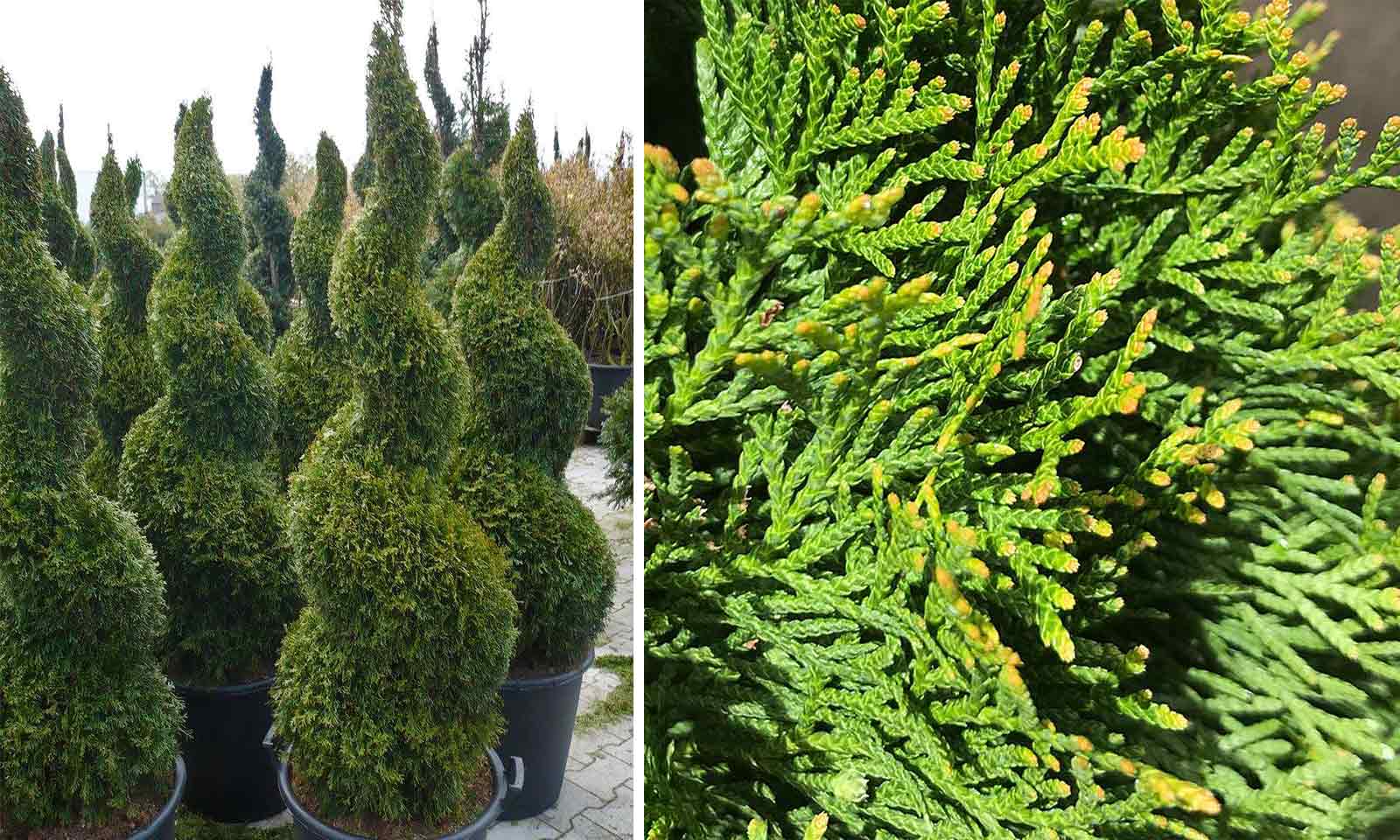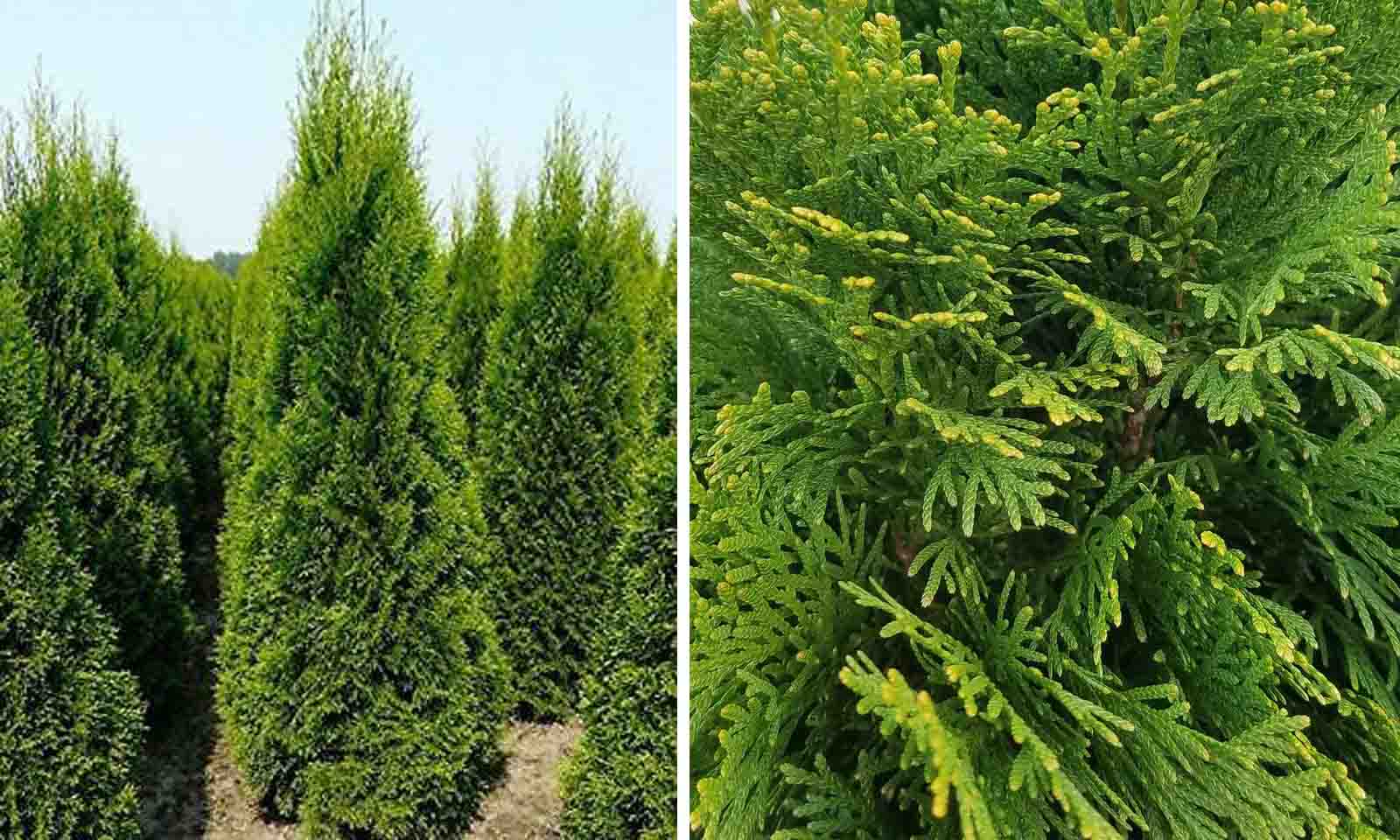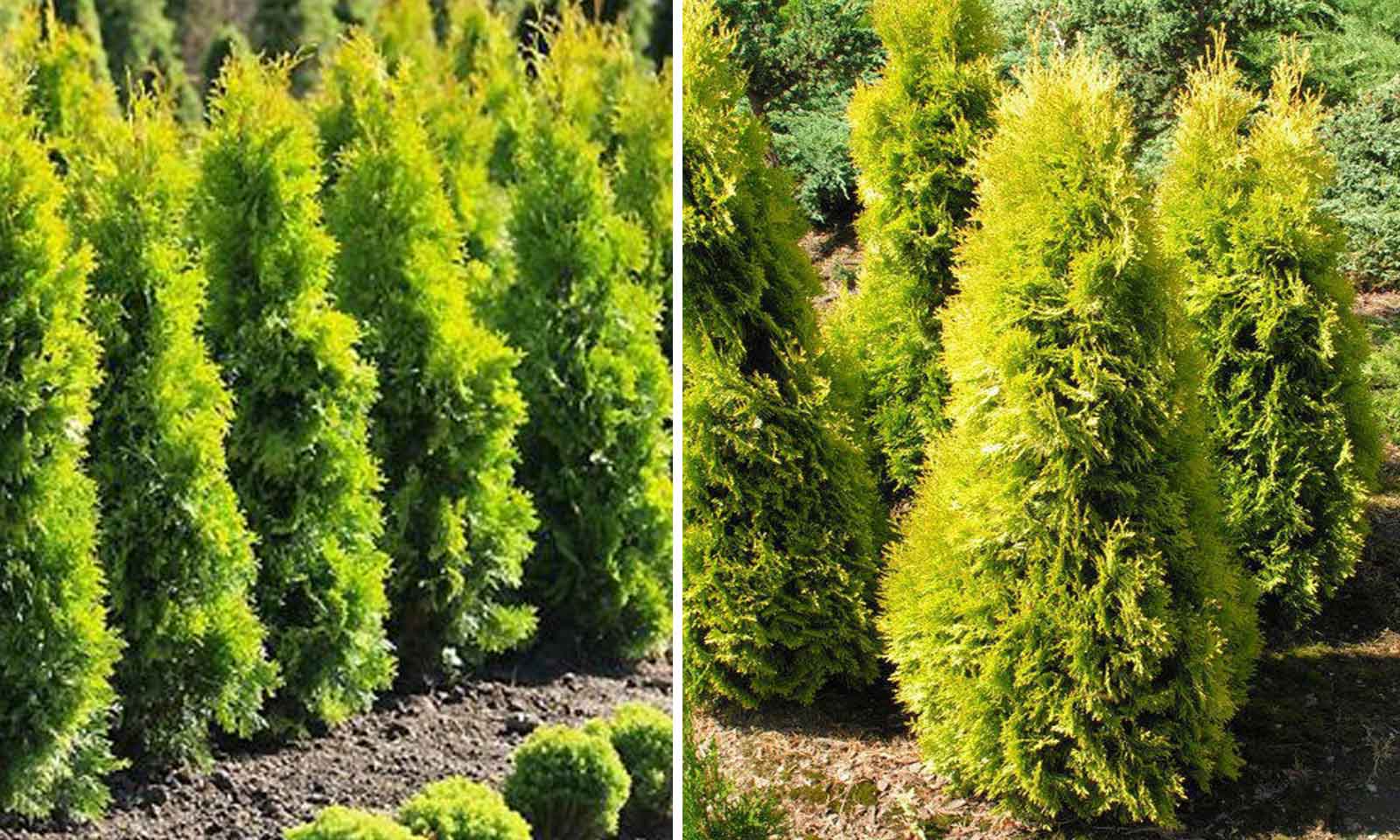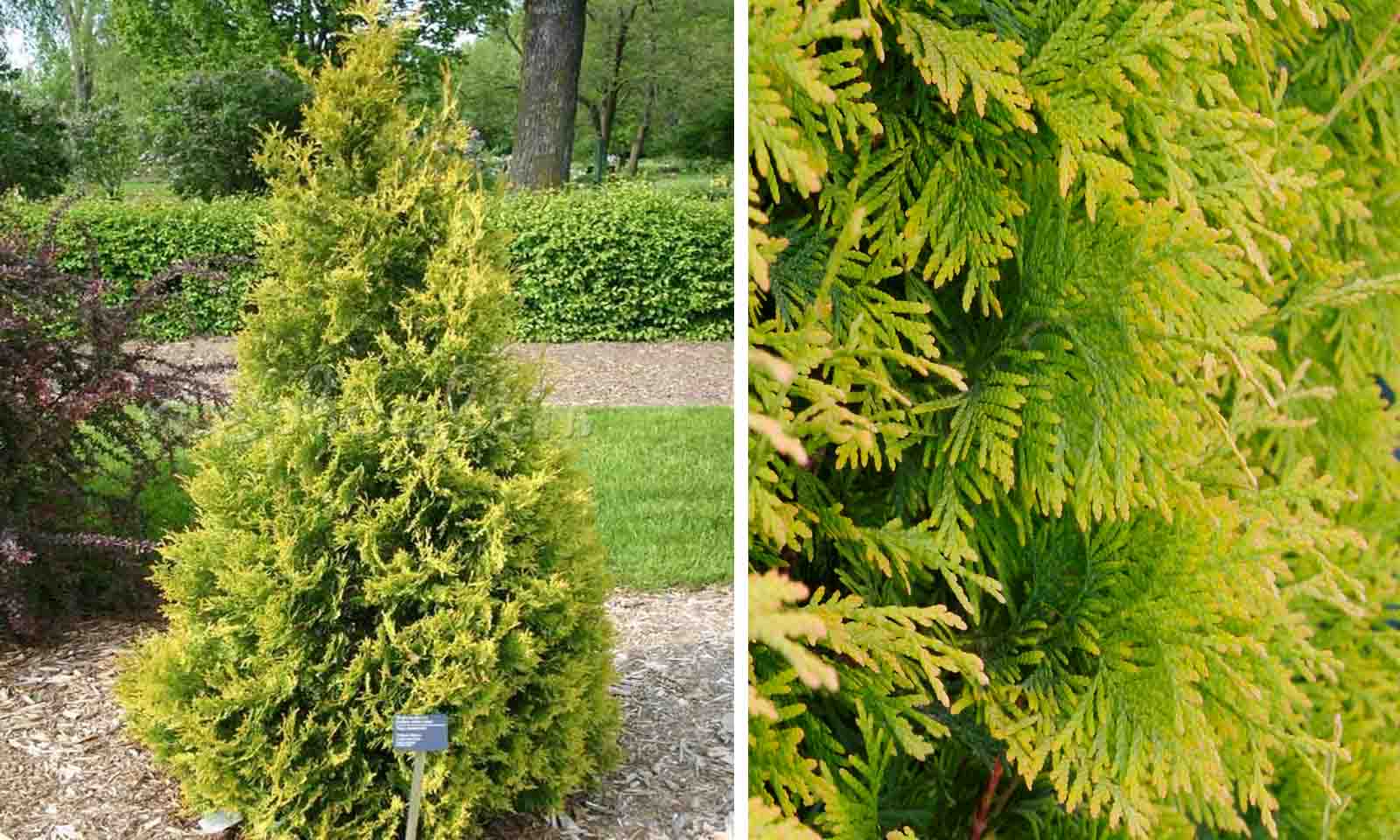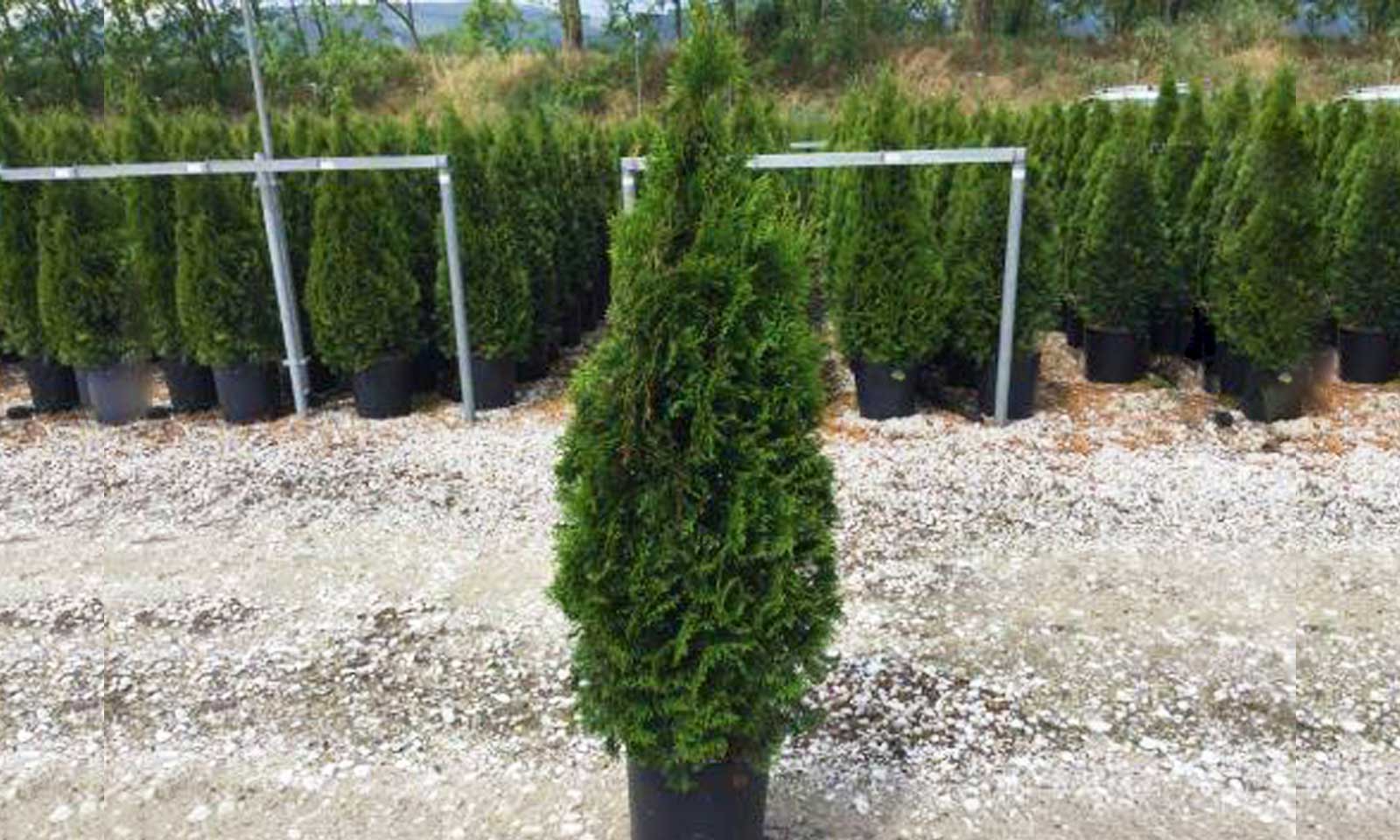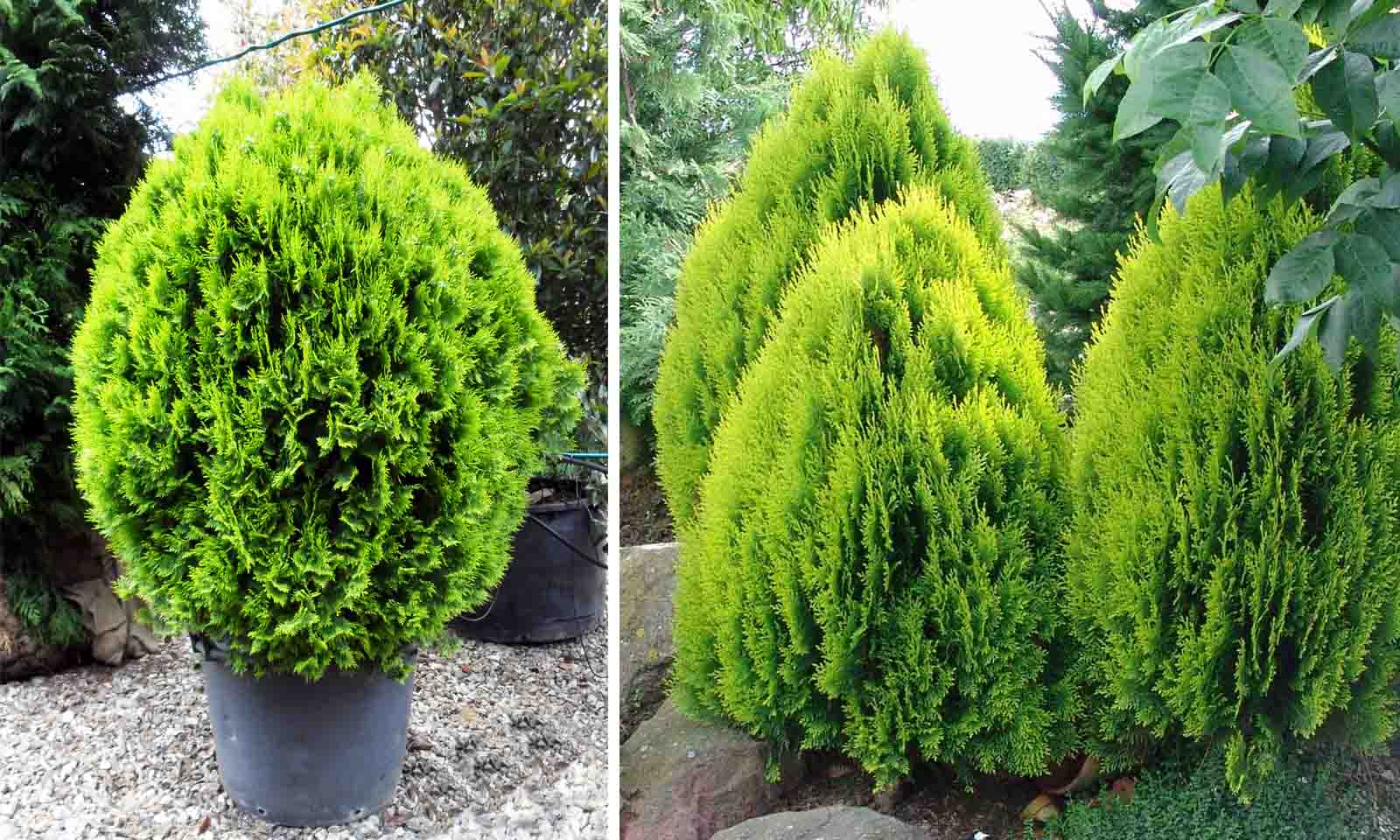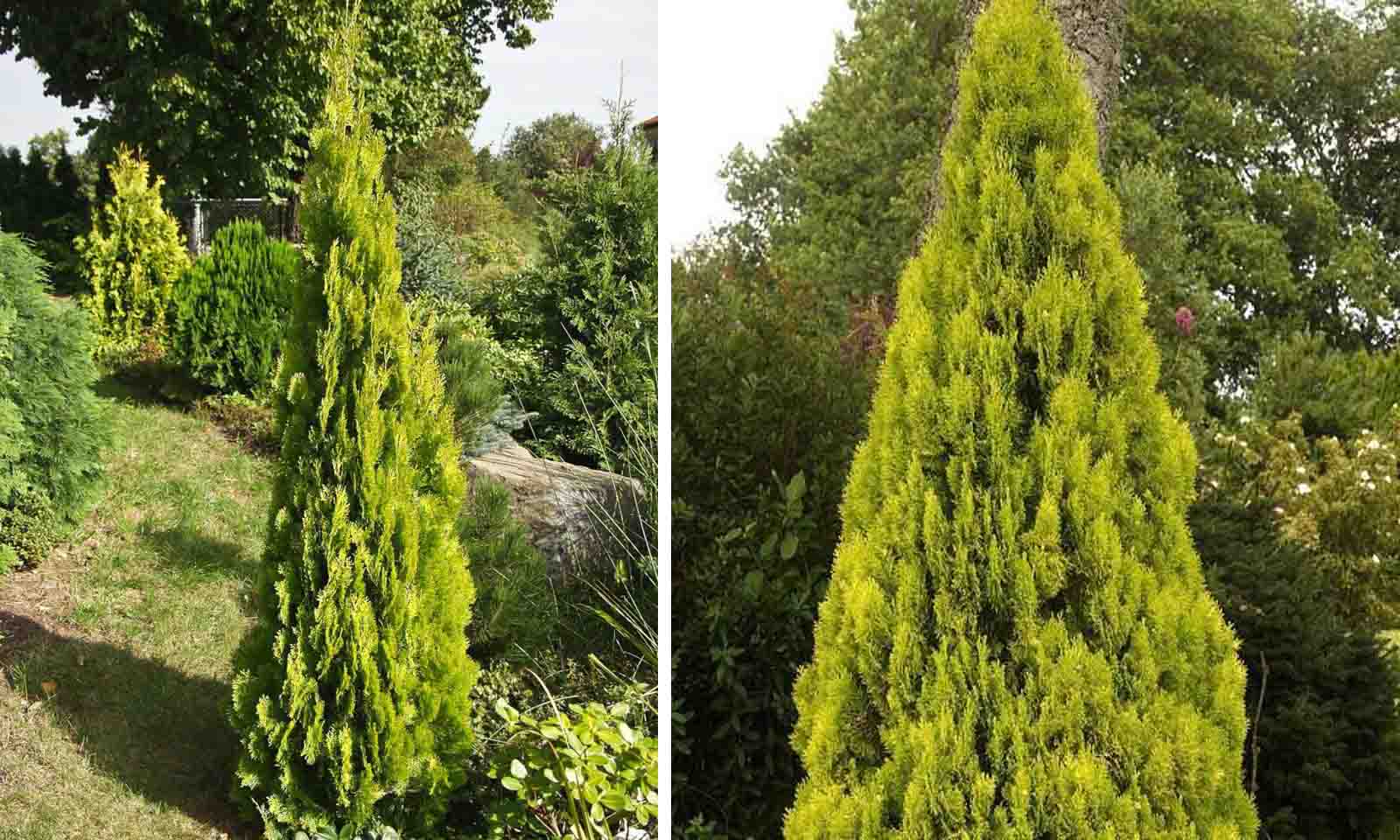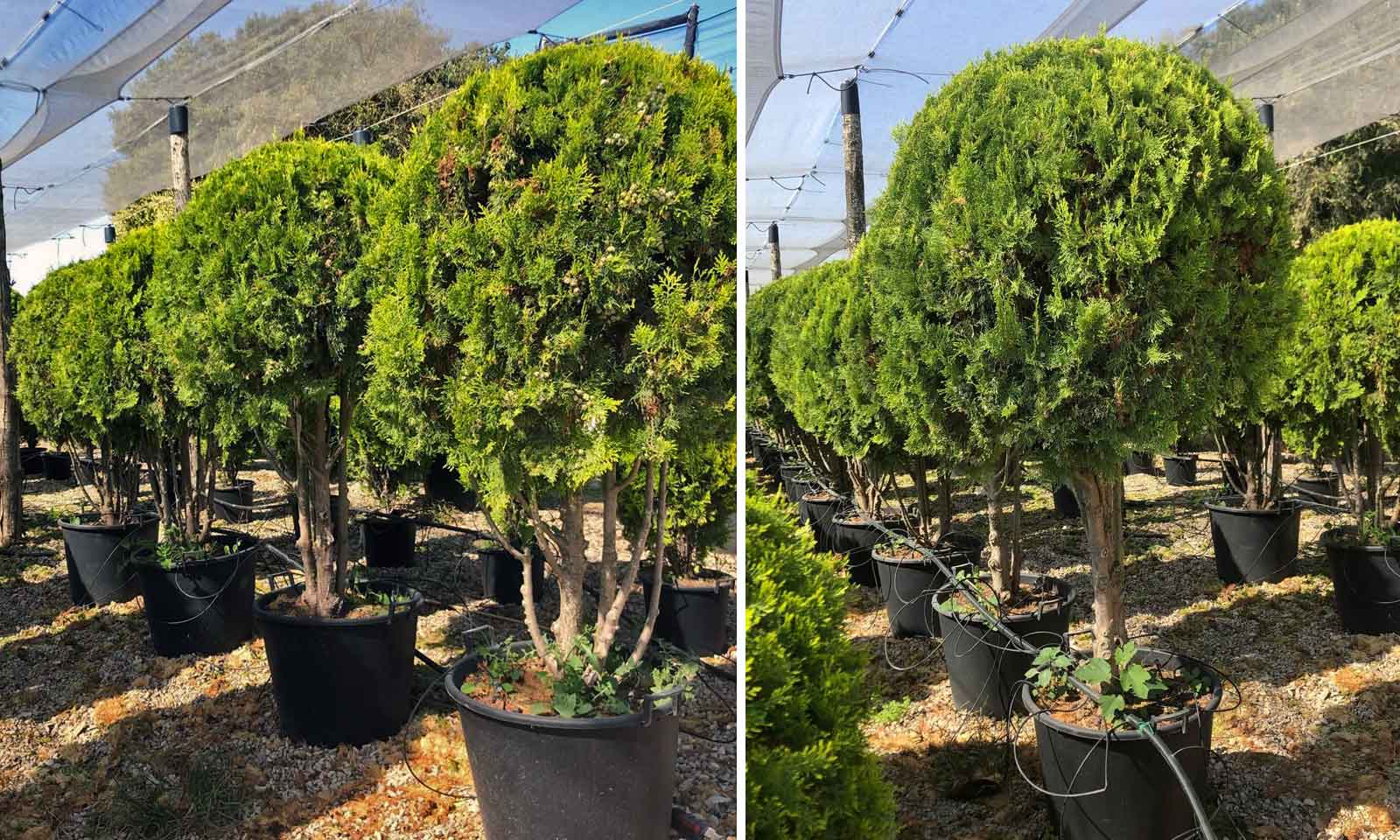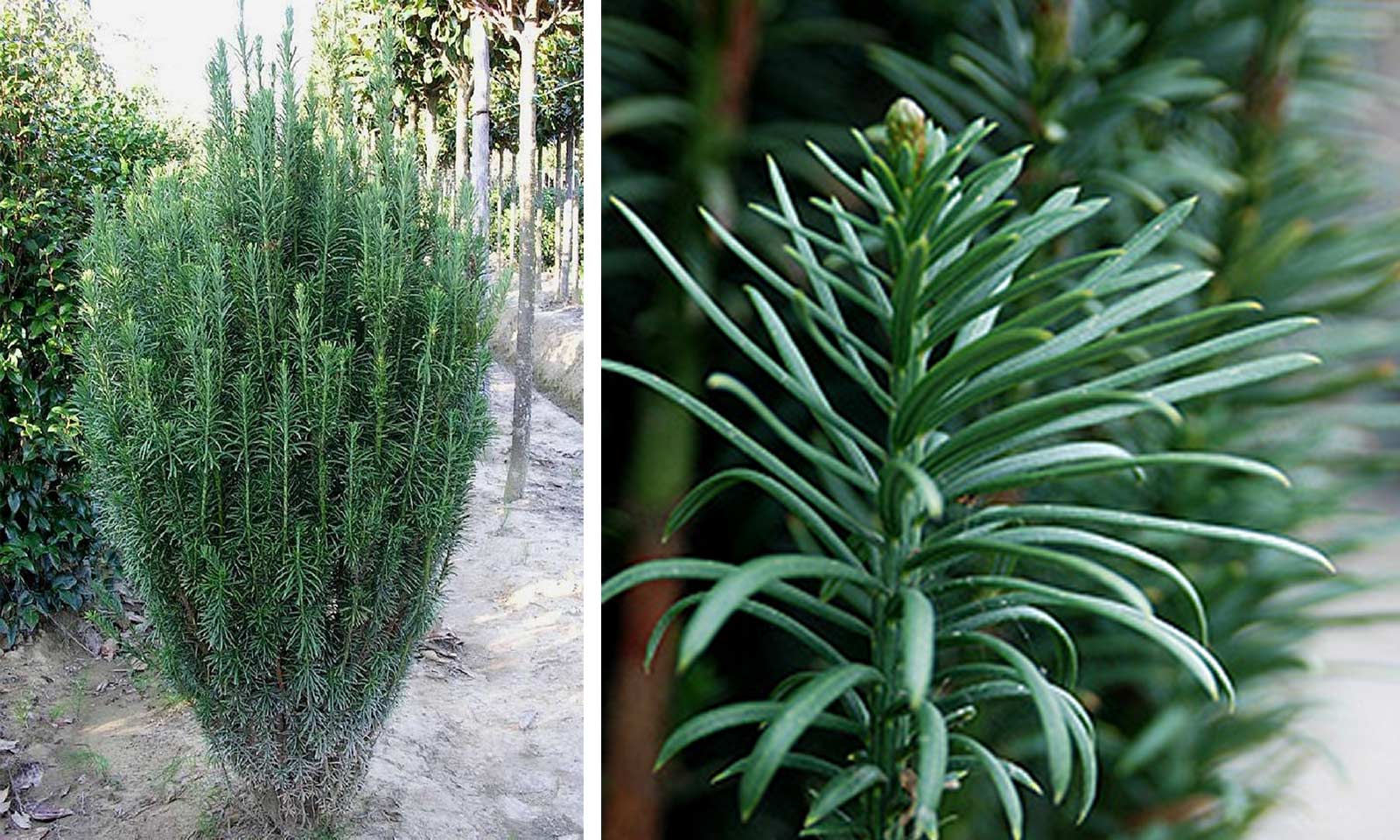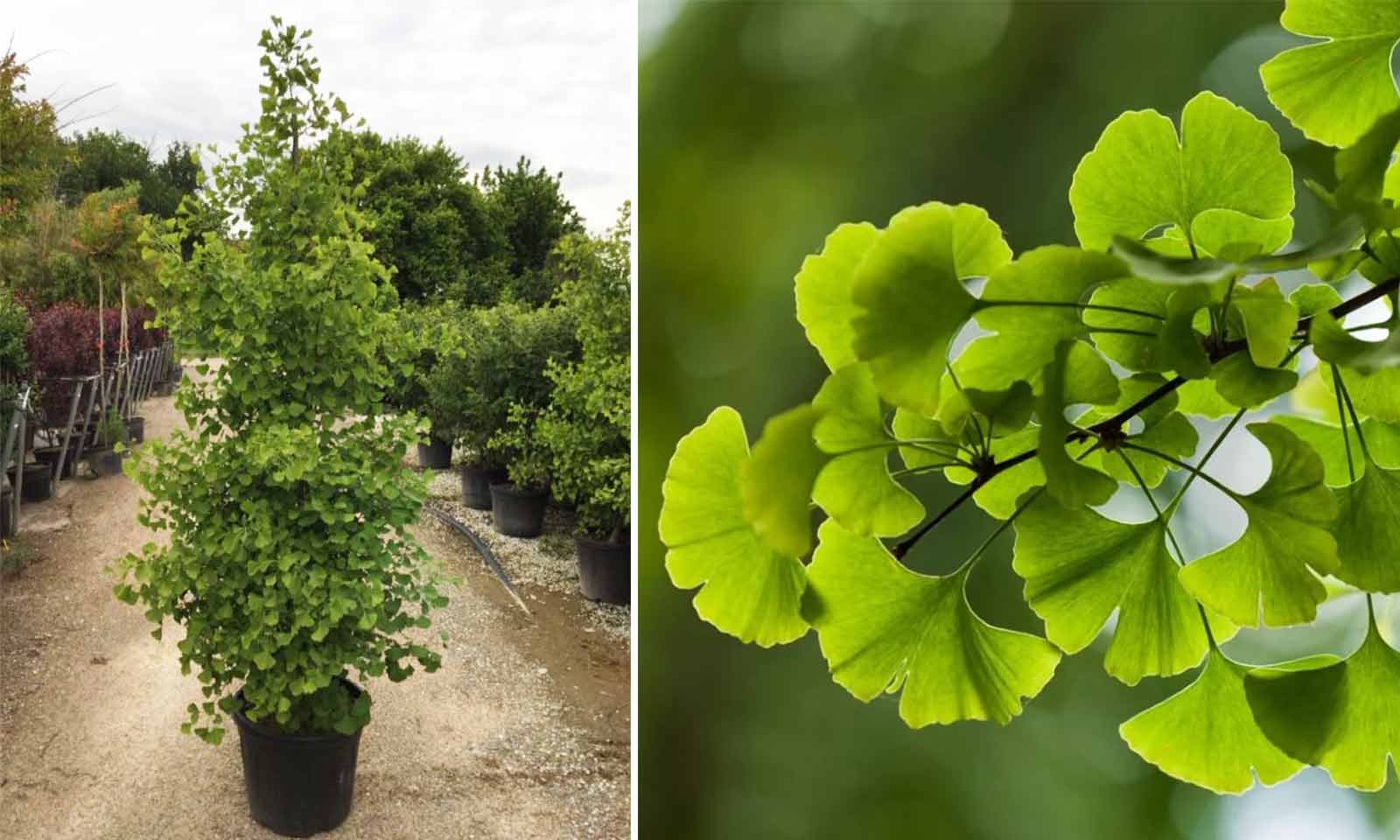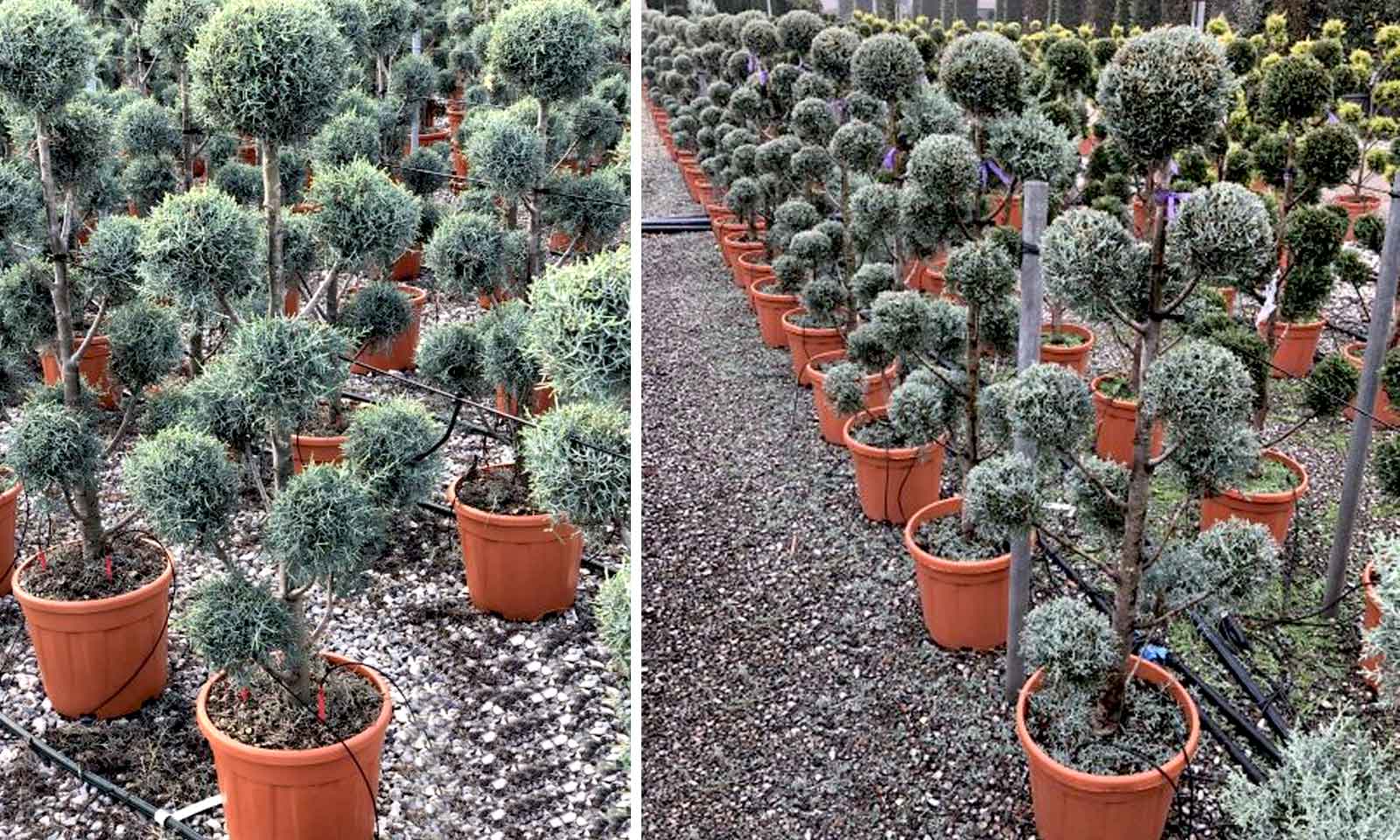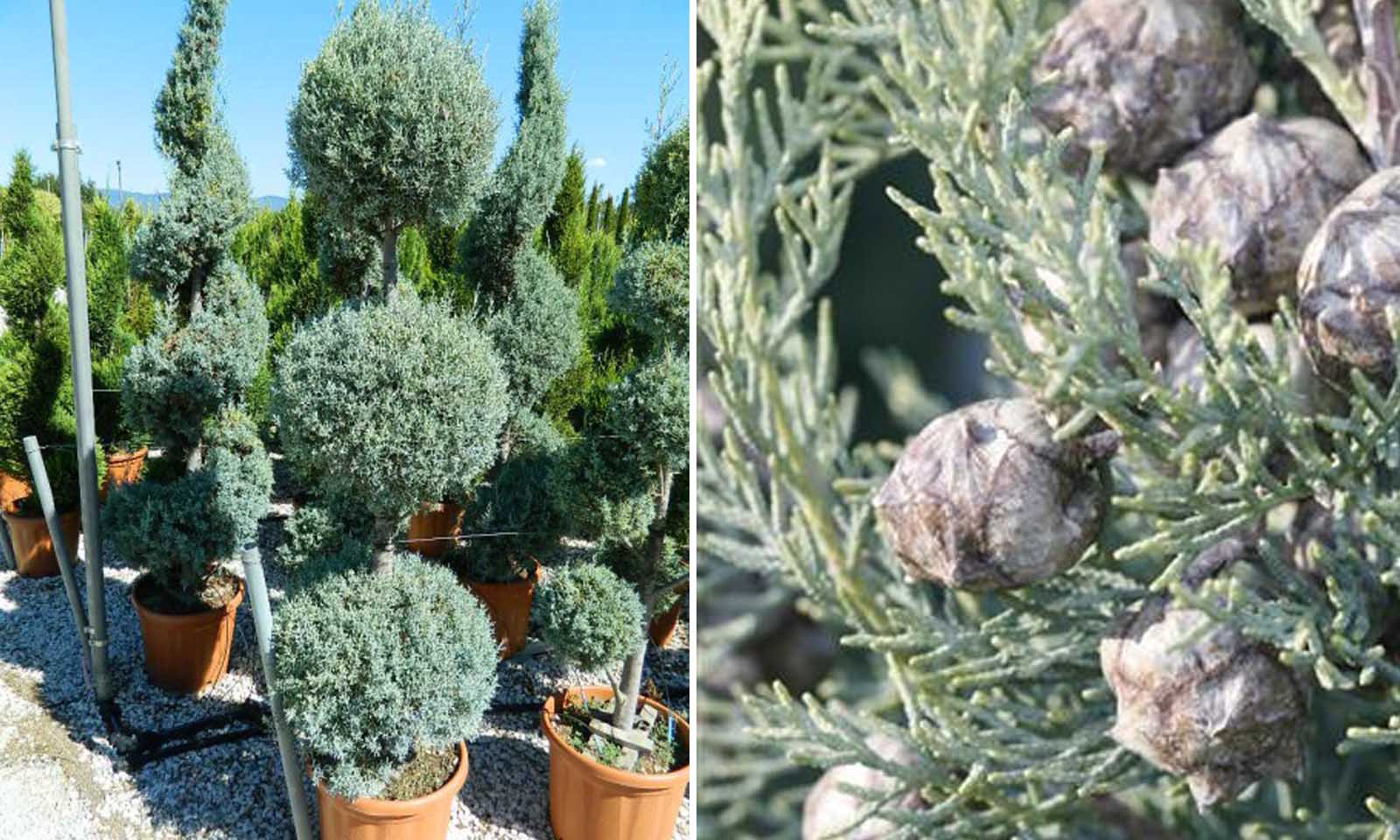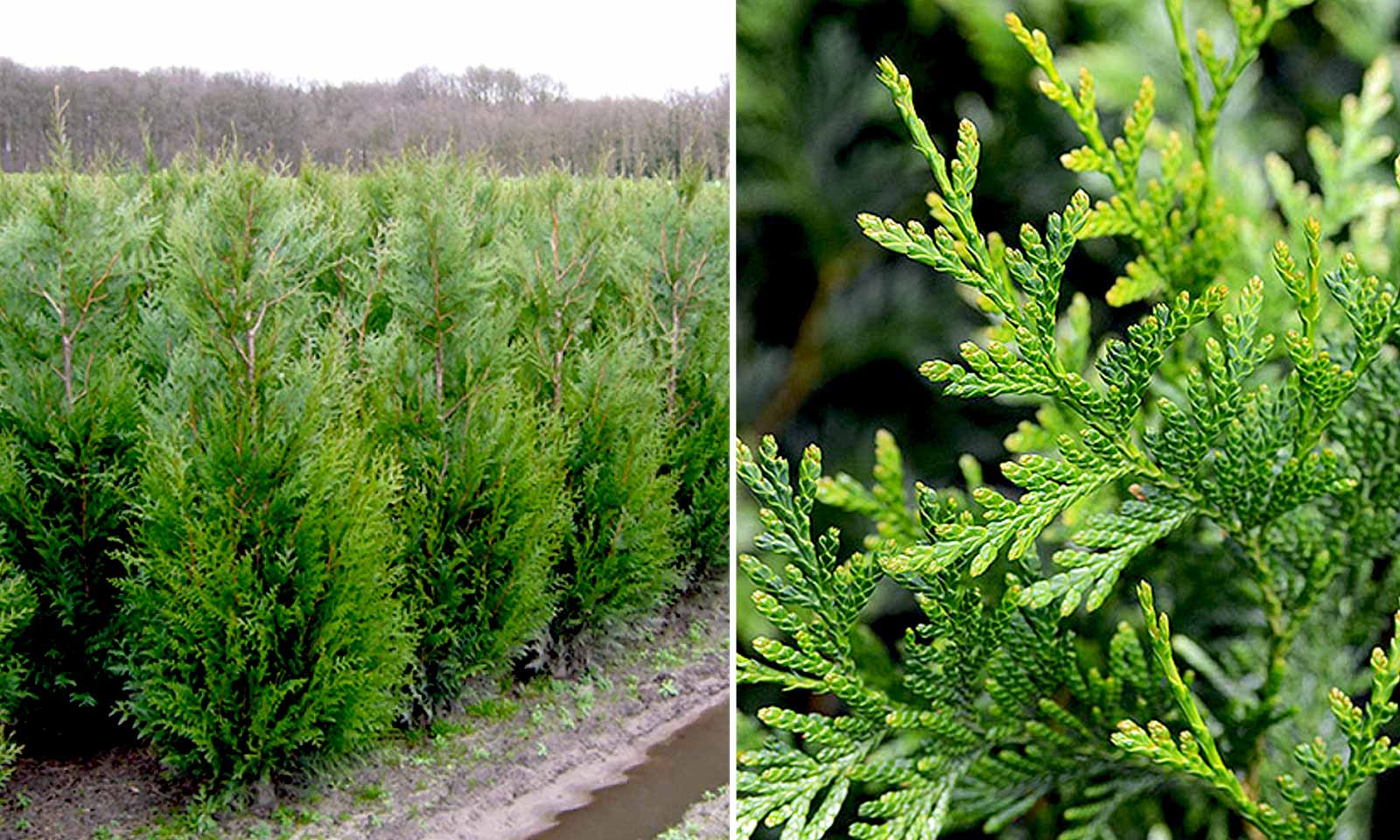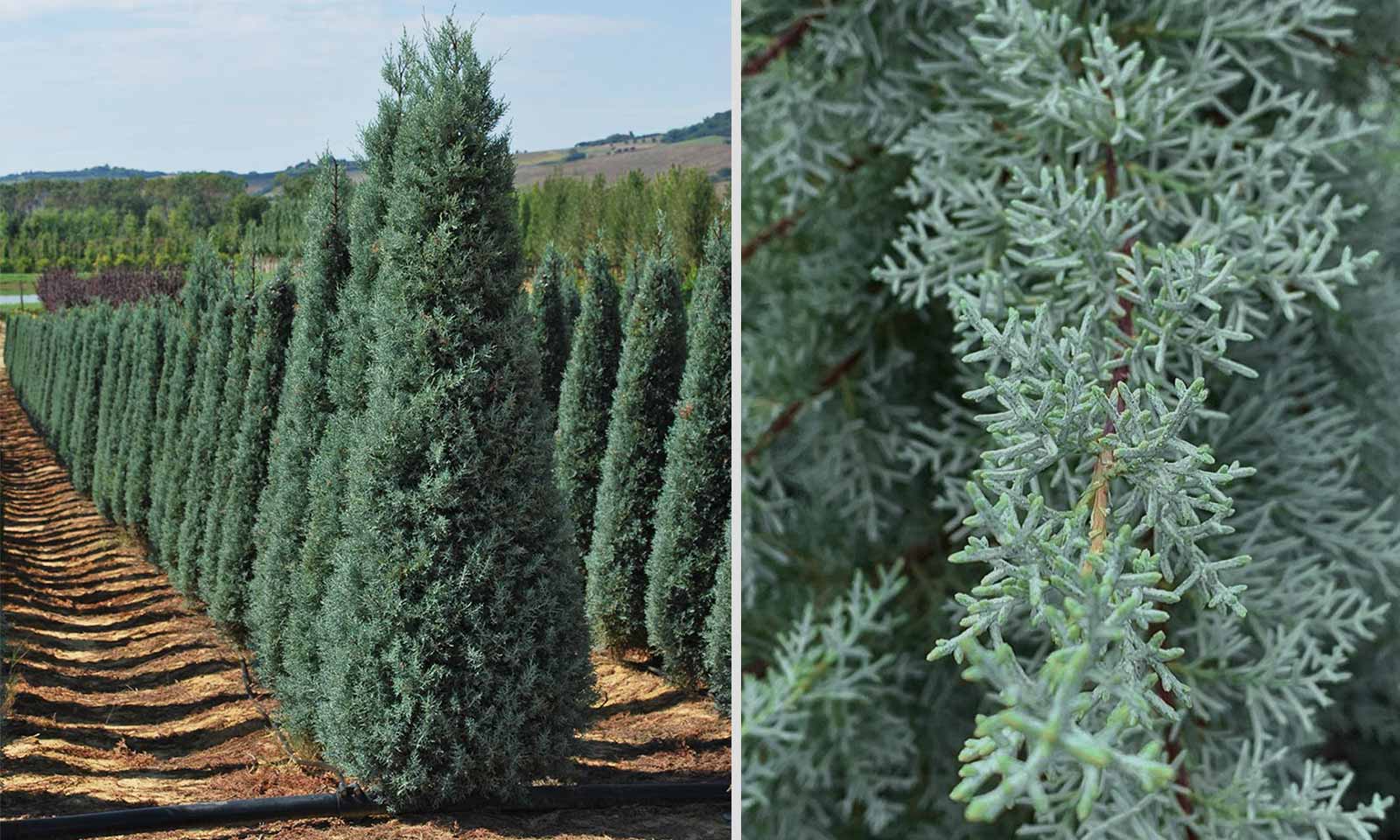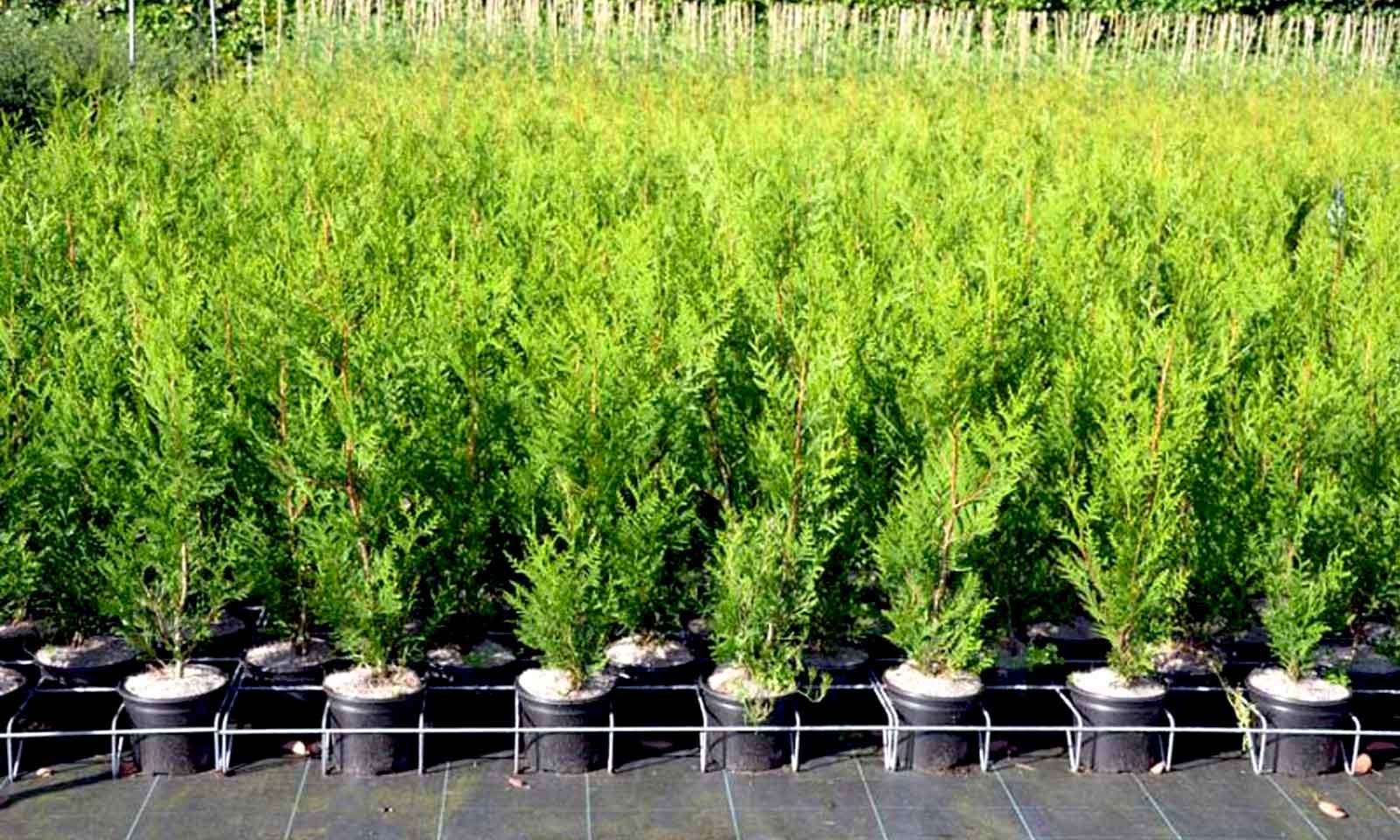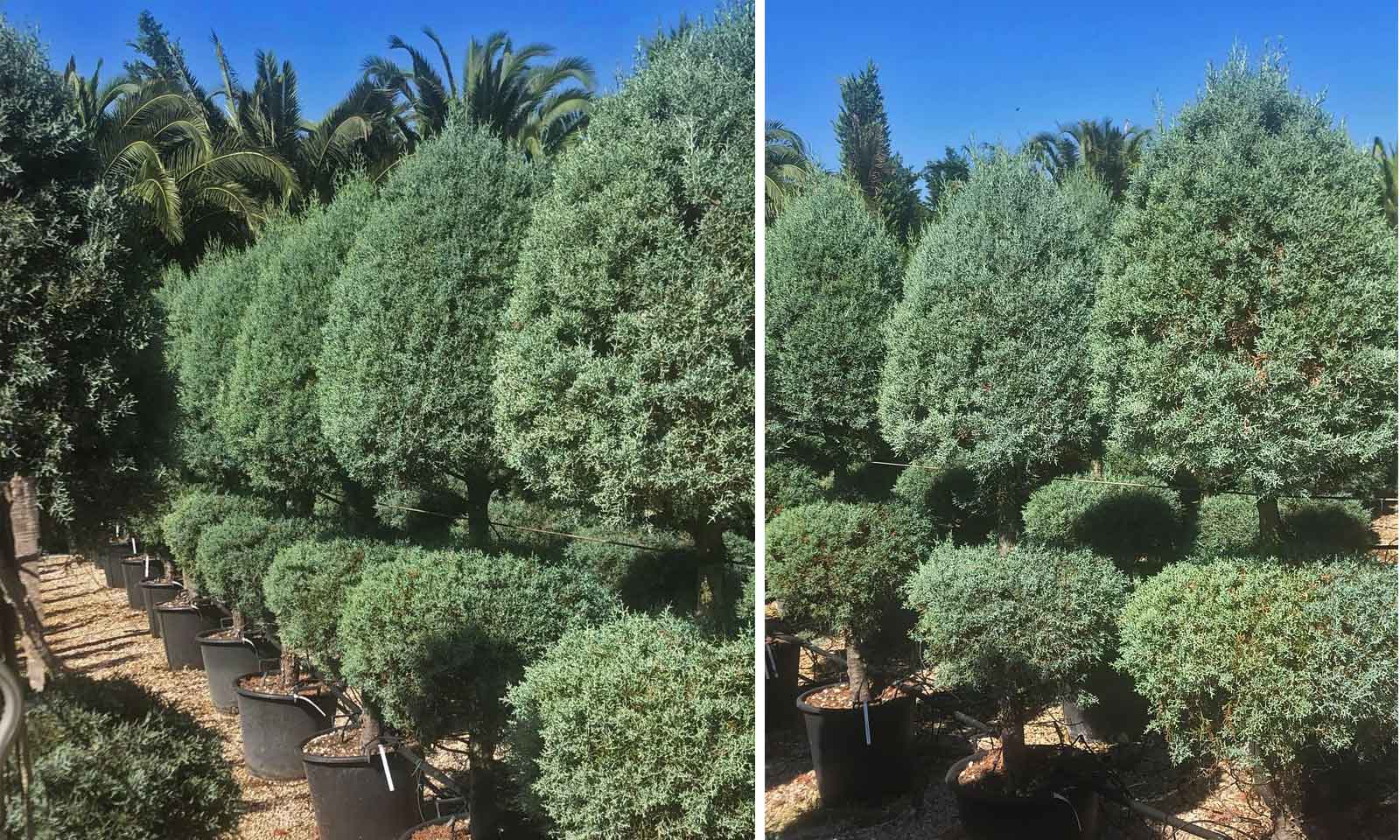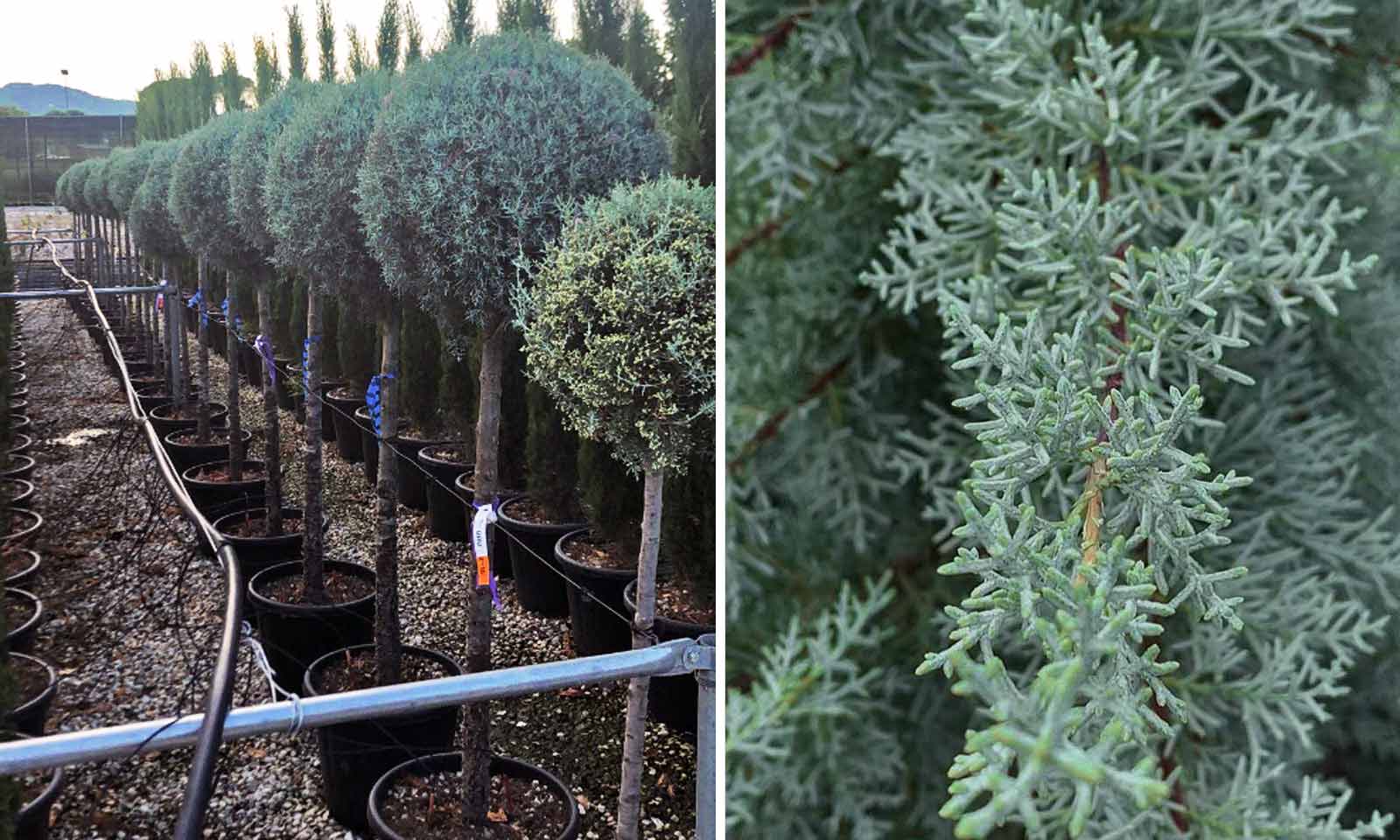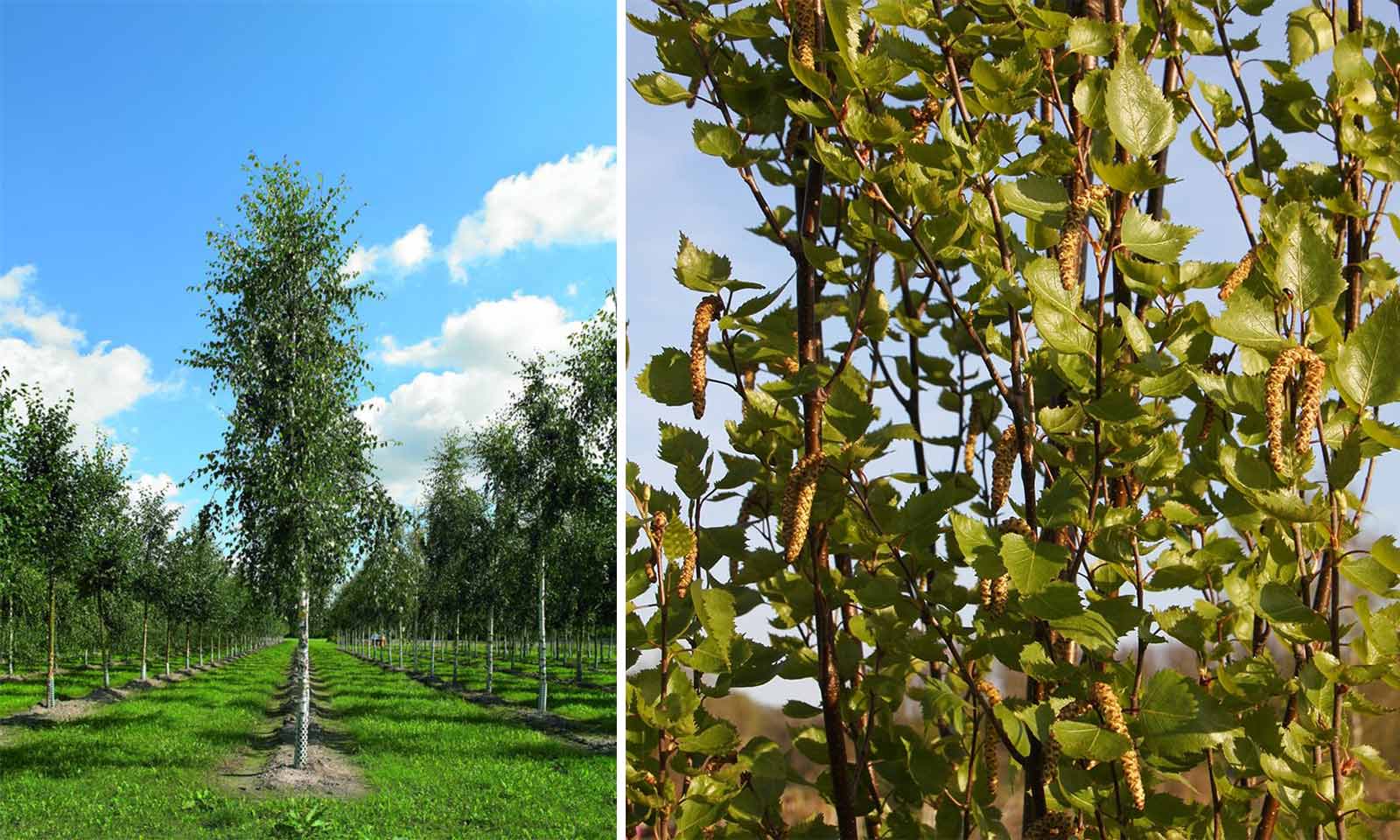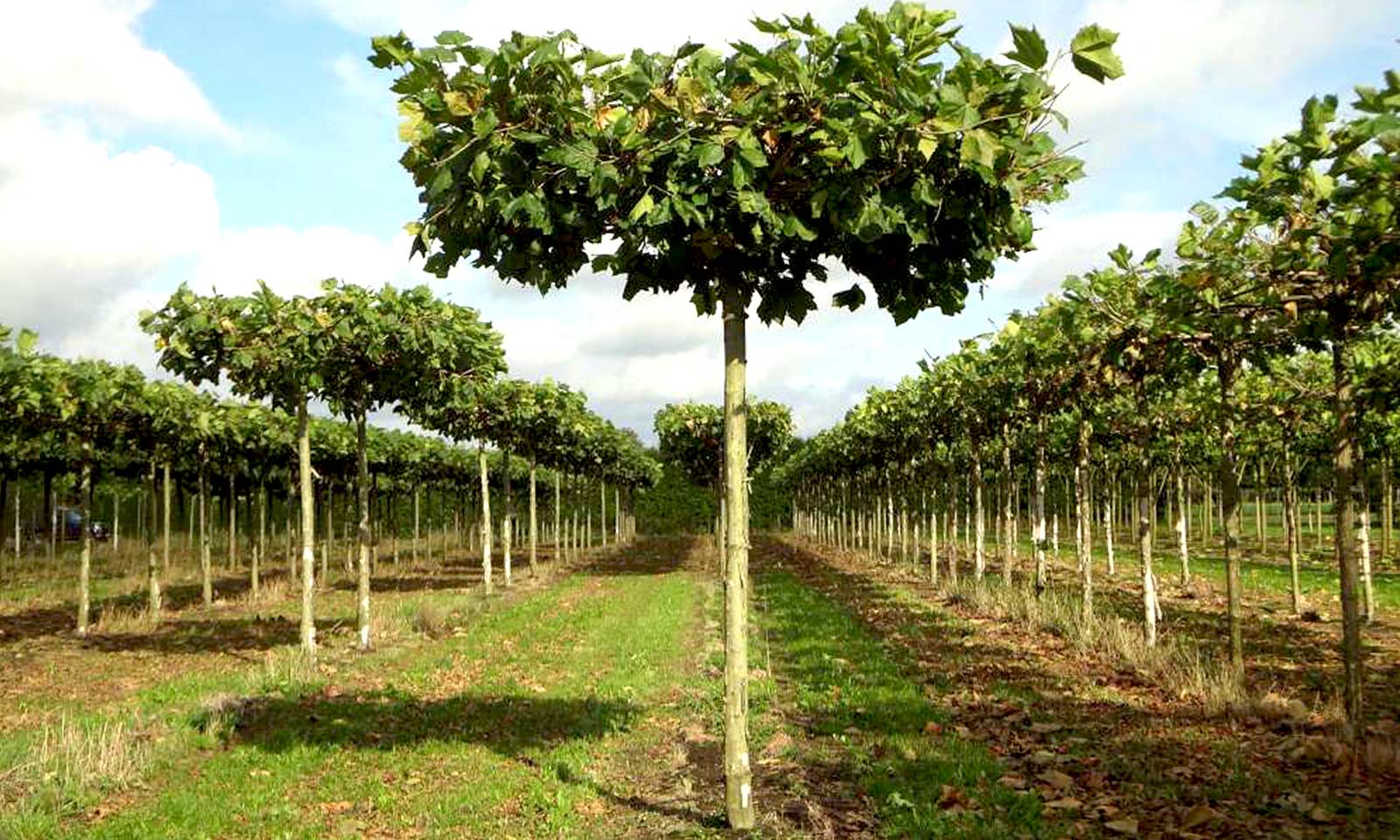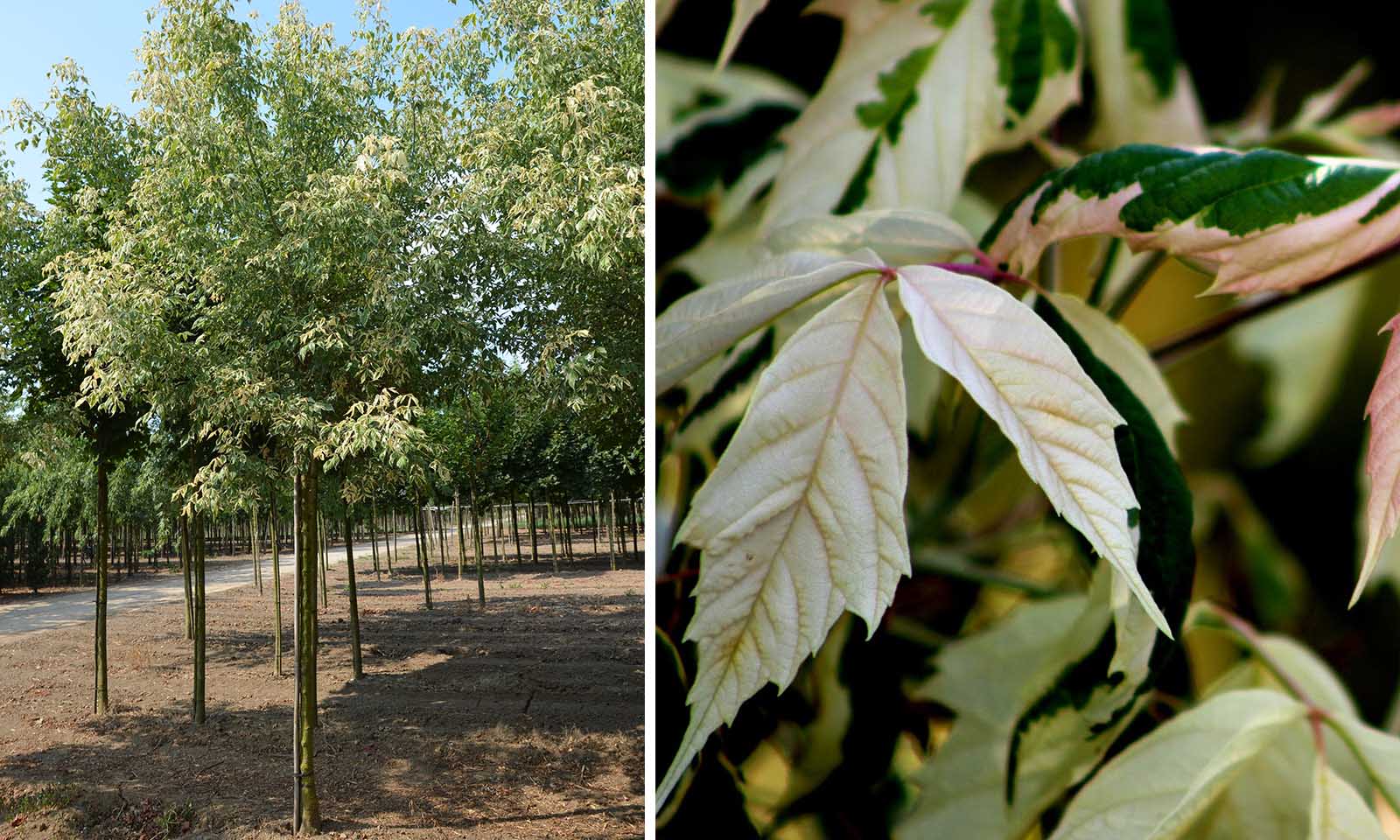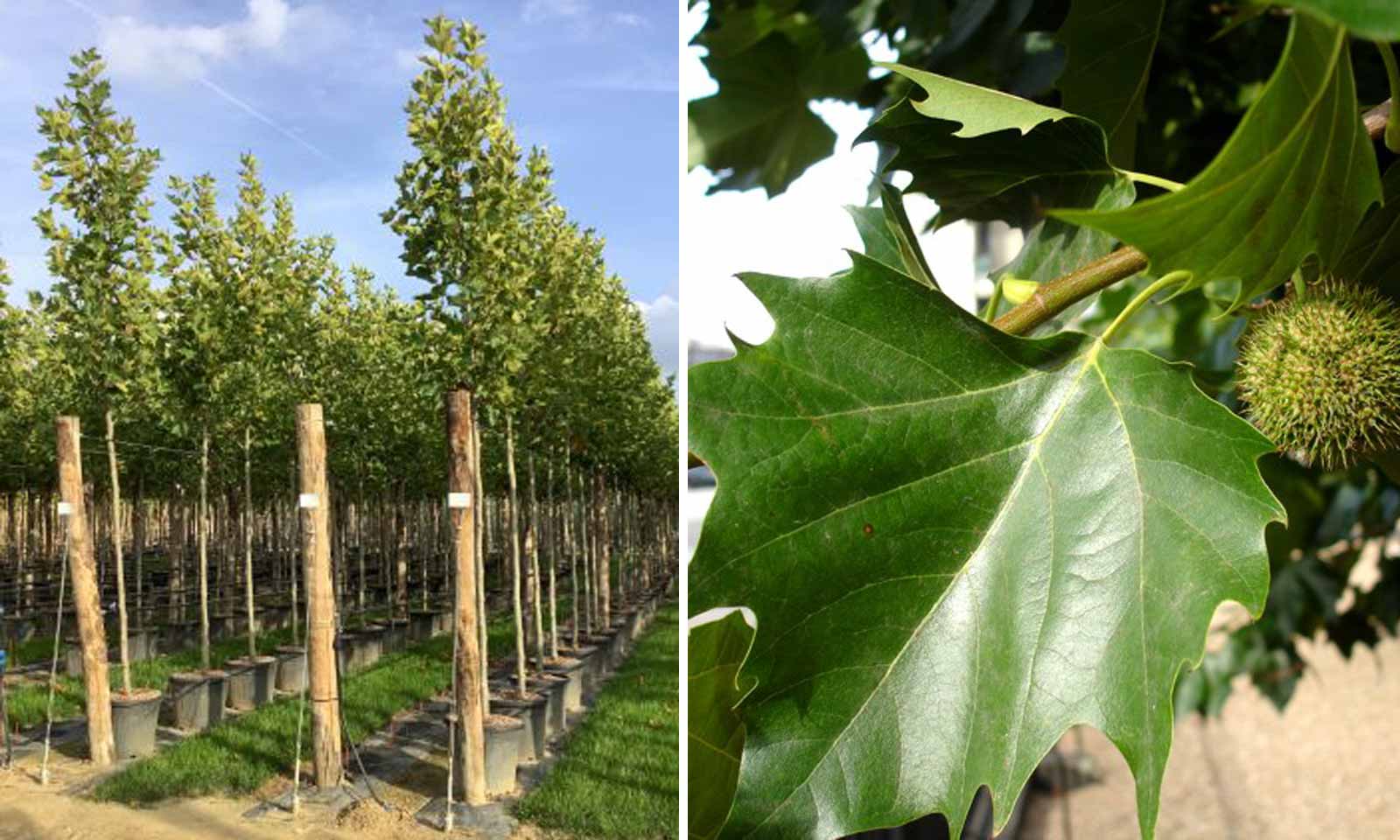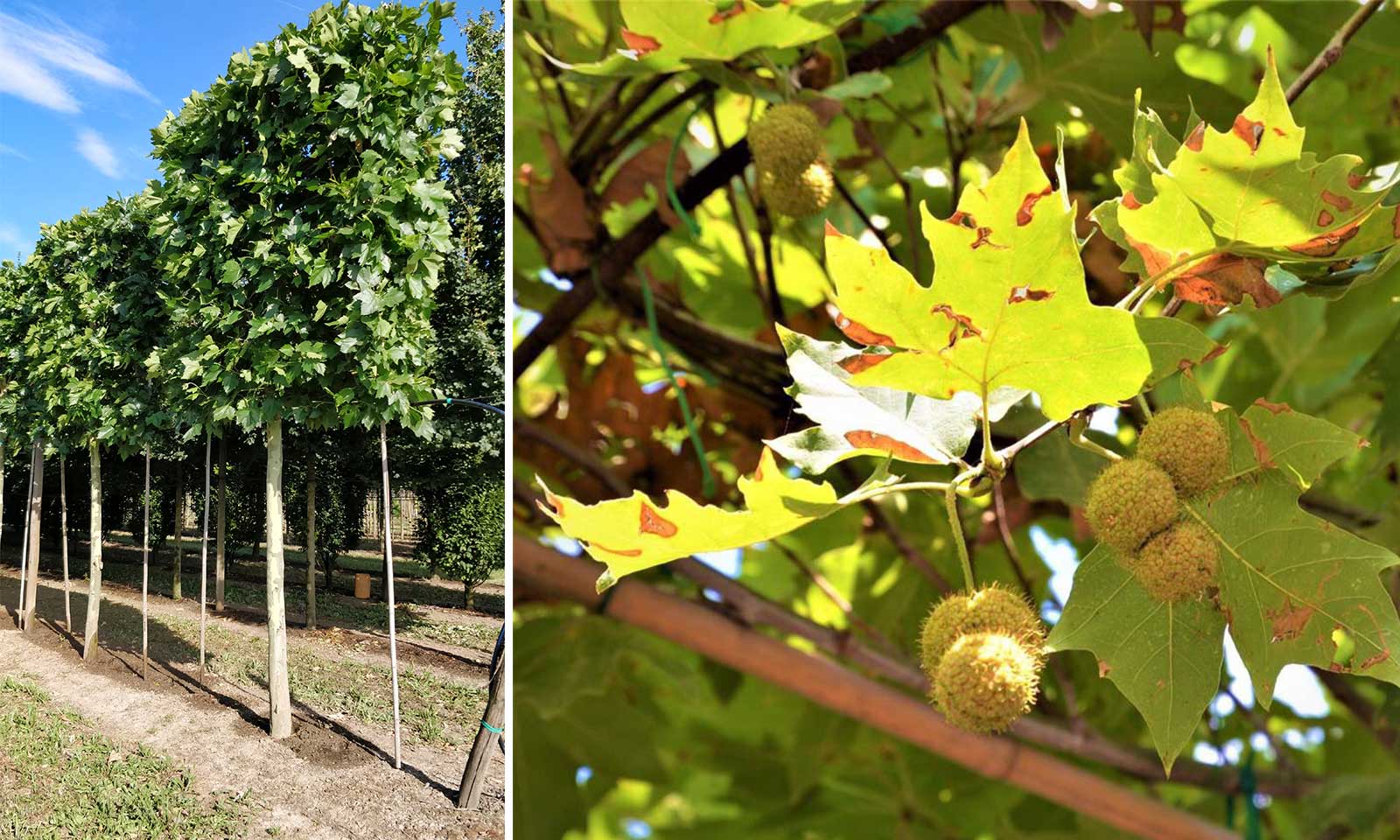Platanus x Acerifolia (London Plane / London Planetree) - Standard Pleached
The Platanus x Acerifolia, also more commonly known as the London Plane, is the same plant as the Hispanica. This plant is in our Standard Espalier Style design. It has a rather interesting history. The actual plant species was formed by accidental hybridisation due to the close proximity of P. Orientalis and P. Occidentalis. It is said to have happened in Spain during the mid 17th century but there are beliefs that state it happened in Vauxhall Gardens in London where John Tradescant the Younger discovered the tree. The actual plant itself has an inconspicuous flower but starts to grow fruit in the winter time. Well drained soil is recommended for this plant and make sure to avoid planting in the vicinity of other buildings. The plant is Hardy at (H6) and is good throughout the UK climate although if on an emergency cold snap, its always best to shelter the plant. It is better to use these plants for City and Courtyard Gardens Coastal. This plant is generally disease and pest free so you don’t have to worry too much. A once a year prune is also recommended.
Product Dimensions
Girth 14-16 cm: 70-90 litre pot, Trunk – 200 cm (6.6 ft), Trellis - W140 x H120 cm (4.6 x 3.9 ft);
Girth 16-18 cm: 90 litre pot, Trunk – 200 cm (6.6 ft), Trellis - W140 x H120 cm (4.6 x 3.9 ft);
Girth 18-20 cm: 110 litre pot, Trunk – 200 cm (6.6 ft), Trellis - W140 x H120 cm (4.6 x 3.9 ft);
Girth 20-25 cm: 130 litre pot, Trunk – 200 cm (6.6 ft), Trellis - W140 x H120 cm (4.6 x 3.9 ft);
Latin Name: Platanus x Acerifolia
English Name: London Plane, Maple-Leaved Plane
Species: Platanaceae
Genus: Platanus
Foliage Type: Deciduous
Foliage: Green
Flower: Inconspicuous
Flowering Period: Fruit growth in Winter
Suggested Location: Outdoor.
Suggested Soil Type: Well-Drained. Clay, Chalk, Loam, Sand
Cultivation: Easy to grow in moist, humus-rich, fertile soils but avoid planting in the vacinity of buildings due to vigorous root system
Propagation: Propagate from hardwood cuttings in winter or suckers in autumn or late winter
Suggested Exposure to Sunlight: Full Sunlight
Suggested Exposure to Weather: Sheltered or Exposed.
Hardiness Rating: Hardy (H6)
Pruning: Pruning group 1
Lowest Temperature Tolerance: -20 °C to -15 °C (-4 °F to 5 °F)
Suggested Uses: City & Courtyard Gardens Coastal
Pests: Generally pest free
Diseases: Generally disease free
Maintenance: Prune once a year
Growth Habit: Bushy
Growth Speed: Fast
Eventual Spread: 90 cm - 1.5 m (2.9 ft - 4.5 ft)
Final Height: 1.8 m - 2 m (5.9 ft - 6.6 ft)
Delivery Cost: This is calculated based on the total size, weight and quantity of your order, as well as the location of your delivery address. You will see the final price at the Online Checkout Page (before making payment) – our website will automatically calculate the lowest possible delivery price and apply discounts to orders of certain products – giving you the best value delivery every time!
Please note that high-volume orders will decrease your delivery costs significantly by spreading the price across multiple items. Visit our Delivery Policy page for more information.
